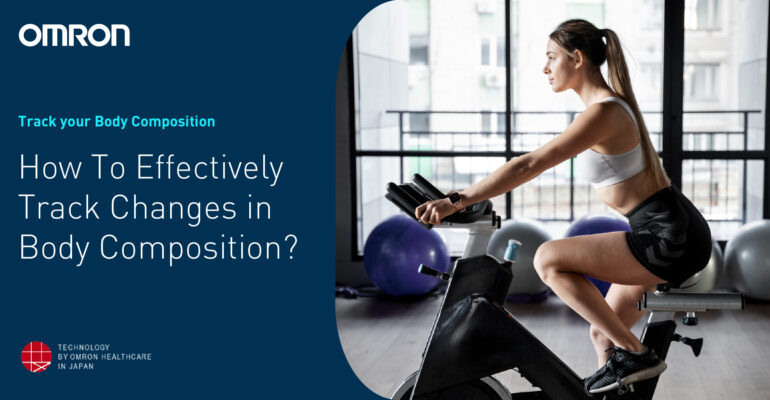How To Effectively Track Changes in Body Composition?
February 26, 2023 2023-04-11 15:47How To Effectively Track Changes in Body Composition?

How To Effectively Track Changes in Body Composition?
Body composition refers to the proportion of different types of tissue in the human body, such as muscle, fat, bone, and organs. Understanding your body composition is important because it provides insight into your overall health and fitness level.[1]
There are two mains components of body composition:
- Lean mass: It refers to the total weight of all the tissues in the body that are not fat. This includes muscle, bone, organs, and other tissues. It is a crucial component of body composition, as it includes all the tissues in the body that are not fatty and plays an important role in overall health and physical function.
- Fat mass: It refers to the total weight of all the fat in the body. Fat is an essential component of body composition, as it serves several important functions, such as insulation, energy storage, and cushioning for the organs.[2]
There are two types of fat in the body: Essential fat and Storage fat.
- Essential fat is necessary for normal bodily functions and is found in small amounts in the heart, lungs, bones, and other organs.
- Storage fat, on the other hand, accumulates in adipose tissue and can impact overall health when it is present in excessive amounts.
Importance of tracking body composition:
A person’s body composition can impact their overall health in various ways. For example, having a high amount of body fat can increase the risk of certain health conditions, such as heart disease, diabetes, and certain cancers. On the other hand, having a high amount of muscle mass can increase metabolism and improve overall physical function.[3]
Tracking body composition by body composition analyzer is important for monitoring health, physical performance, weight management, and body image. Understanding the proportion of lean mass and fat mass in the body can provide valuable information and help individuals make informed decisions about their health and fitness.
To track body composition effectively body composition analyzer uses various methods , including:
- Skin-fold thickness measurements: This method involves using calipers to measure the thickness of a fold of skin and underlying fat at various sites on the body. The results are then used to estimate the total body fat percentage.
- Bioelectrical impedance analysis (BIA): This method uses a small electrical current to estimate body fat percentage by measuring the resistance of tissues to the flow of electrical current.
- Dual-energy x-ray absorptiometry (DXA): This method uses low-dose x-rays to measure bone density and body composition. DXA is considered to be one of the most accurate methods for measuring body composition, especially for assessing bone density.
- Hydrostatic weighing: This method involves weighing a person underwater and using the resulting measurements to estimate body fat percentage.
- Near Infrared Interactance: This method uses near-infrared light to measure the thickness of subcutaneous fat and estimate body fat percentage.
Each method has its own strengths and limitations, and some methods may be more appropriate for certain individuals than others. It’s important to choose a method that is accurate, reliable, and appropriate for your specific needs and goals. [4]
Tracking changes in body composition can be an effective way to monitor progress towards fitness goals, such as weight loss or muscle building.
Here are some tips for effectively tracking changes in body composition:
- Measure regularly: Regular measurements are important for tracking changes in body composition. It is recommended to measure at the same time of day, under similar conditions, such as after waking up in the morning and before eating or drinking.
- Keep track of changes: Record measurements and track changes over time. This will allow you to see trends and make informed decisions about changes to your diet or exercise routine.
- Use body fat percentage as the primary indicator: Body fat percentage is a more accurate indicator of changes in body composition than weight, as it takes into account both muscle and fat mass.
- Consider other factors: Changes in body composition can be influenced by factors such as diet, exercise, and hydration levels. Make sure to take these into account and adjust your tracking methods accordingly.
- Consult with a professional: If you are having trouble tracking changes in body composition, or if you are unsure about the accuracy of your measurements, consider working with a professional, such as a dietitian or personal trainer.[5]
The Omron Body Composition Monitor (BCM) is a body composition analyzer that can be used to track changes in body composition. It uses bioelectrical impedance analysis (BIA) technology to estimate body fat percentage, muscle mass and other metrics. You can use the Omron BCM HBF 702T, the 4-point full body sensing technology that provides users with a comprehensive understanding of their body mass composition.
Wrap-Up:
Tracking changes in body composition can provide valuable insights into your progress towards your exercise routines and healthy regimen. It is essential to choose the right method for tracking your body composition that suits your particular requirements and goals.
Reference:
- https://www.webmd.com/fitness-exercise/what-is-body-composition
- https://www.ncbi.nlm.nih.gov/pmc/articles/PMC6178563/
- https://www.niddk.nih.gov/health-information/weight-management/adult-overweight-obesity/health-risks
- https://www.healthline.com/nutrition/ways-to-measure-body-fat#TOC_TITLE_HDR_2
- https://www.idealnutrition.com.au/how-to-measure-changes-in-body-composition-a-guide-%EF%BF%BC/






